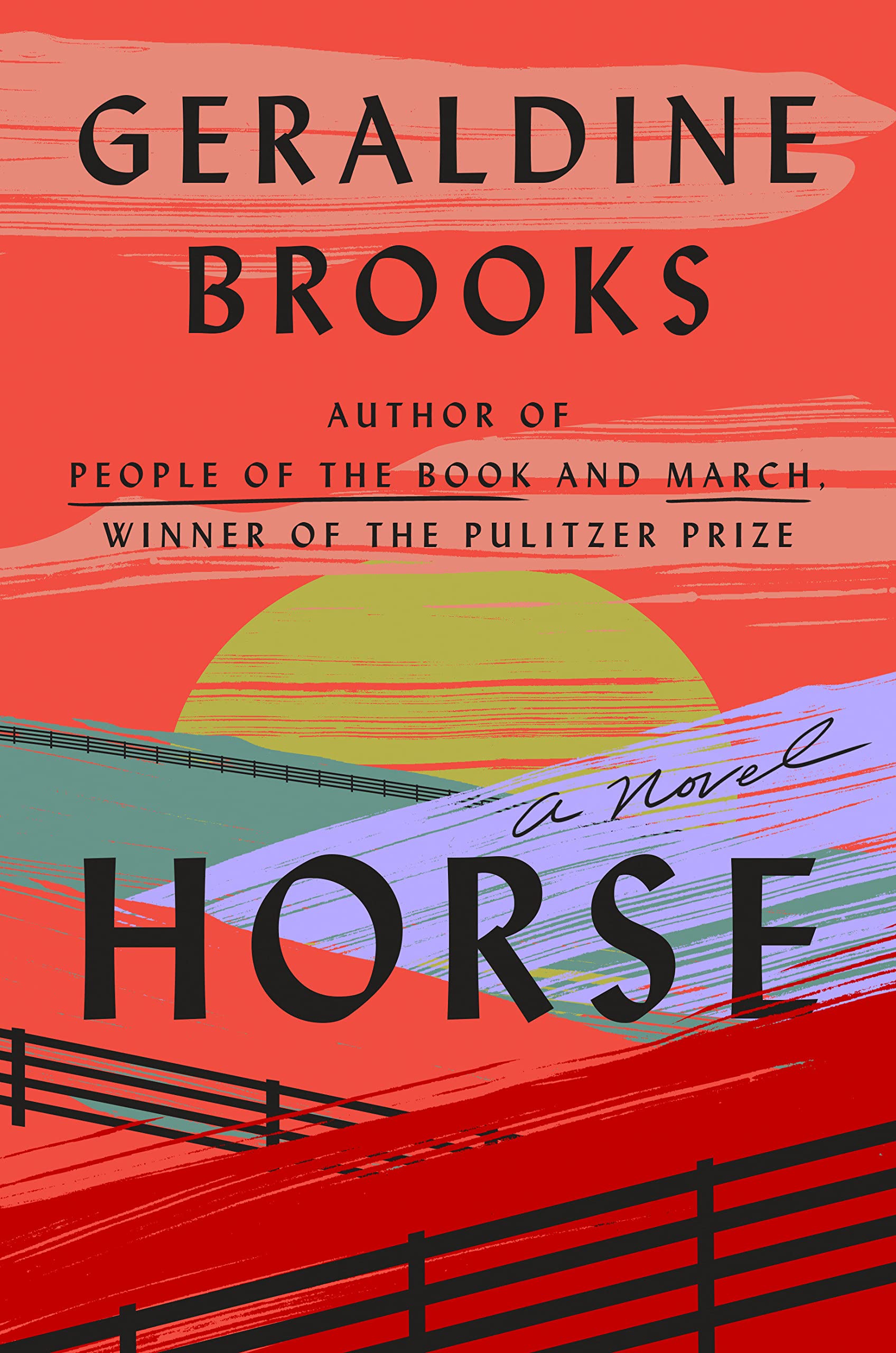The possessive is potent in Geraldine Brooks’s latest novel Horse, a painful study of America’s history set in the world of thoroughbred racing. Horse braids together several storylines over centuries, scrutinizing race, ownership, identity, and justice, and like the novel’s title suggests, a horse—whether composed of paint, bones, or flesh and blood—anchors all of the characters’ disparate tales of longing.
Horse is set, primarily, in three complicated realities, revealing its largely likable leads deliberately and intricately, their stories converging in satisfying stride. Opening in 2019 America, the Trump presidency is nearing its desperate final act, and the rise of a more blatant and virulent strain of racism in political and popular discourse is unignorable. Theo, a 26-year old Nigerian American graduate student in Washington, D.C., lives amidst these thumping tensions daily. He sports his Georgetown-branded best when he goes out for some exercise because, as he notes, presaging the 2020 murder of Ahmaud Arbery, “a Black man, running, should dress defensively.” One day, at the yard sale of a newly widowed neighbor, whose deceased husband “had made clear, through his body language, what he thought about having a Black man living nearby,” Theo discovers a nineteenth-century painting of a horse. Theo is an art historian and, before he was driven out of the sport by racism, was a star polo player, but he knows little of American equestrian art.
Theo soon meets Jess, an Australian scientist managing the Smithsonian’s osteology lab. Their first encounter is cringe-inducing, but the two share a common interest in horses. In fact, Jess has been asked by a colleague to locate a skeleton of a horse by request, and she does, in a long-forgotten attic. Jess works to “extract the testimony” from the bones, “seeking answers to questions she didn’t yet know how to ask.” Meanwhile, Theo begins to research the history of the painting, uncovering a lost history of Black horsemen.
Concurrently, Brooks skillfully paints the picture of an enslaved Black youth named Jarrett in 1850s Kentucky. As the son of a freedman, Harry Lewis, and the stableman for his enslaver Dr. Warfield, Jarrett is afforded a relative degree of freedom that allows him to pursue his love of horses. That love is so profound it is practically part of him: Jarret is described as “half colt himself” and “flighty as a colt” because of his long, skinny arms and his raised-by-equines upbringing. Through nights spent sleeping on stall floors or in hay lofts, Jarrett sees “from the horse’s point of view,” observing that “horses lived with a world of fear, and when you grasped that, you had a clear idea how to be with them.”
Jarrett’s pride and joy is a recently born colt, who enters the world with four white feet. The two develop an unbreakable bond. Jarrett trains the newly minted Darley to become a racehorse, and a winning one at that. The champion’s likeness is captured by painter Thomas J. Scott, who is eager to understand how the horse “feels about the world… what kind of soul he’s got.” Soon, the backdrop of the Civil War, at first a faint pulse on Dr. Warfield’s estate, becomes a racing heartbeat as Jarrett and Darley venture out into a deeply divided South.
Finally, we meet Martha Jackson, a 1950s New York art dealer, her stable of artists including contemporary greats none other than Jackson Pollock. Martha was raised by a horseback riding mother, but she doesn’t just “like horses,” as a friend observes. “It’s far more complicated than that,” she tells us. Martha eventually acquires for sale a painting of a horse, clad with four white socks.
Brooks’s textural barn scenes divulge a personal admiration for horses, illustrating, lovingly, the “mellow scent of horse” and “mud-caked foals” throughout the novel. Long the beasts of burden, fighting battles not their own, the proper treatment of horses is consistently pushed, as with Jarrett’s view that “both his father and Dr. Warfield treated horses like mechanical contraptions: do this, get that,” and an equine veterinarian’s regrettable reflections in conversation with Jess: “There was so much abuse of the horses you see. I’m afraid I realized rather too late that I was abetting it.”
Throughout the story, it is impossible to miss those parallels between the treatment of horses and enslaved people. While at times clunky and over-engineered, some comparisons are torturously resonate, exemplified by Harry’s take on the “bad omen” white socks that grace the greatest racehorse of all time—“My way of thinking, a good horse has no color, it’s what’s inside that’s worth the fret”—or Theo’s observation while studying artwork: “Loyal, muscle, willingness—qualities for a horse, qualities for the enslaved.”
The takeaway, teed up in discordant endings of triumph and heartbreak, seems to be while celebrating progress we must continue to rebuke racism. Our reckoning remains incomplete and unresolved. Horse is a poignant check-in, a lookout point, for how far we’ve come, and how far we still yet must ride. In 21st century America, privilege is still purchased by proximity to power, which is too often equivalent to whiteness. Horse stands as a convincing case that time alone does not heal all wounds.










